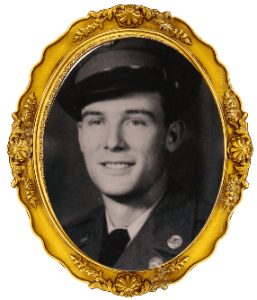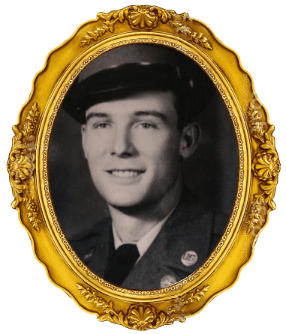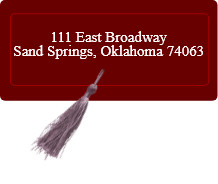

“Roy Leo Rankin was born in Mountainburg, Arkansas to Nelse and Grace (Morris) Rankin on December 17, 1922. He spent his childhood in and around Mountainburg. He enlisted in the US Army and he was assigned to the 31st Infantry Regiment as a machine gunner and was stationed in the Philippines.
On December 8, 1942 the day after the attack on Pearl Harbor, the US forces in the Philippines came under attack by the Japanese army. They were immediately cut off from any reinforcements and supplies. With America’s losses at Pearl Harbor and the countries focus elsewhere these men were abandoned and left to fight alone with their Filipino, British, and Australian counterparts. As the war ensued they were pushed back until they could go no further in the Bataan Peninsula. With the sea at their back, the Japanese army in front, starving, exhausted and sick, they surrendered to the Japanese army on April 9, 1943. General Douglas McArthur, their commanding officer, had already fled and General Edward King, Jr. had the unfortunate duty of surrender. Approximately 75,000 US and Filipino soldiers were then forced on a 65 mile march from Mariveles to a train depot at San Fernando. This march has become known as the Bataan Death March with only about 54,000 of the 75,000 making it through the march. Many were killed by Japanese forces if they could not keep up or fell out line. Upon reaching the train depot they were transported in box cars like cattle to Camp O’Donnell and from there they were placed in POW camps where many more died from diseases, starvation, and murder.
Roy was housed at the Cabanatuan Japanese POW Camp from May 1942 until August 1944. Cabanatuan POW camp is the subject of the movie “The Great Raid.” As The Japanese army began to suffer losses the POW’s that were able to work were systematically taken to Japan to be used as slave labor. These men were transported to Japan by what has become known as “Hellships.” These freighters, many of which were owned and operated by the Mitsubishi Company, were not flagged as POW ships and subject to sinking by American forces. On more than one occasion Hellships were sunk by American forces while they had American POW’s on board. In August of 1944, Roy was loaded into the cargo hold of the “Noto Maru” and transported to Japan. The Noto Maru was torpedoed but the torpedoes ran too deep and missed the ship. The trip in the cargo hold of these ships was a horrendous experience as there was little water or food nor room to move around. He was then used as slave labor for the Nisshin Flour Company until Japan’s surrender on August 15, 1945. There were many Japanese companies that used Americans as slave labor and they are listed in a book called “Unjust Riches.” Upon his liberation by American forces arriving in Tokyo Roy spent several months on a hospital ship in Tokyo harbor. He suffered from malaria, dysentery, and severe malnutrition. Upon his liberation, Roy, a man with the stature of 6’1” weighted only 96 pounds. The mistreatment of POWs was an order from the Japanese War Ministry, which read in part: “Whether they are destroyed individually or in groups, and whether it is accomplished by means of mass bombing, poisonous smoke, poisons, drowning, or decapitation, dispose of them as the situation dictates. It is the aim not to allow the escape of a single one, to annihilate them all, and not to leave any traces.” (*Source History.com)Unfortunately, in that age and time there was no services available to the POW’s and they were put back into society without any counselling or other support. Roy kept most of what he endured internalized and rarely spoke about his experiences in the war. Roy died at the young age of 49, on January 18, 1972 being the father of five children.”


“Roy Leo Rankin was born in Mountainburg, Arkansas to Nelse and Grace (Morris) Rankin on December 17, 1922. He spent his childhood in and around Mountainburg. He enlisted in the US Army and he was assigned to the 31st Infantry Regiment as a machine gunner and was stationed in the Philippines.
On December 8, 1942 the day after the attack on Pearl Harbor, the US forces in the Philippines came under attack by the Japanese army. They were immediately cut off from any reinforcements and supplies. With America’s losses at Pearl Harbor and the countries focus elsewhere these men were abandoned and left to fight alone with their Filipino, British, and Australian counterparts. As the war ensued they were pushed back until they could go no further in the Bataan Peninsula. With the sea at their back, the Japanese army in front, starving, exhausted and sick, they surrendered to the Japanese army on April 9, 1943. General Douglas McArthur, their commanding officer, had already fled and General Edward King, Jr. had the unfortunate duty of surrender. Approximately 75,000 US and Filipino soldiers were then forced on a 65 mile march from Mariveles to a train depot at San Fernando. This march has become known as the Bataan Death March with only about 54,000 of the 75,000 making it through the march. Many were killed by Japanese forces if they could not keep up or fell out line. Upon reaching the train depot they were transported in box cars like cattle to Camp O’Donnell and from there they were placed in POW camps where many more died from diseases, starvation, and murder.
Roy was housed at the Cabanatuan Japanese POW Camp from May 1942 until August 1944. Cabanatuan POW camp is the subject of the movie “The Great Raid.” As The Japanese army began to suffer losses the POW’s that were able to work were systematically taken to Japan to be used as slave labor. These men were transported to Japan by what has become known as “Hellships.” These freighters, many of which were owned and operated by the Mitsubishi Company, were not flagged as POW ships and subject to sinking by American forces. On more than one occasion Hellships were sunk by American forces while they had American POW’s on board. In August of 1944, Roy was loaded into the cargo hold of the “Noto Maru” and transported to Japan. The Noto Maru was torpedoed but the torpedoes ran too deep and missed the ship. The trip in the cargo hold of these ships was a horrendous experience as there was little water or food nor room to move around. He was then used as slave labor for the Nisshin Flour Company until Japan’s surrender on August 15, 1945. There were many Japanese companies that used Americans as slave labor and they are listed in a book called “Unjust Riches.” Upon his liberation by American forces arriving in Tokyo Roy spent several months on a hospital ship in Tokyo harbor. He suffered from malaria, dysentery, and severe malnutrition. Upon his liberation, Roy, a man with the stature of 6’1” weighted only 96 pounds. The mistreatment of POWs was an order from the Japanese War Ministry, which read in part: “Whether they are destroyed individually or in groups, and whether it is accomplished by means of mass bombing, poisonous smoke, poisons, drowning, or decapitation, dispose of them as the situation dictates. It is the aim not to allow the escape of a single one, to annihilate them all, and not to leave any traces.” (*Source History.com)Unfortunately, in that age and time there was no services available to the POW’s and they were put back into society without any counselling or other support. Roy kept most of what he endured internalized and rarely spoke about his experiences in the war. Roy died at the young age of 49, on January 18, 1972 being the father of five children.”















